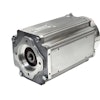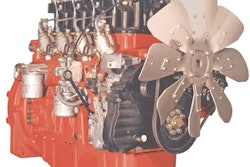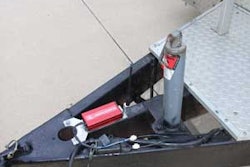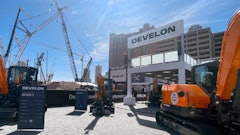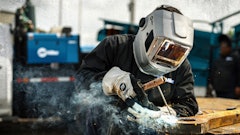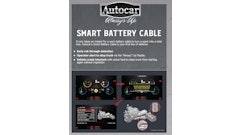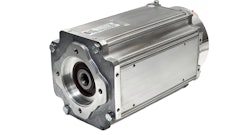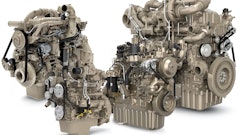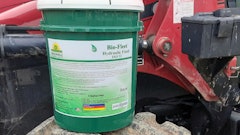Lube skids and trailers can offer a versatile alternative to dedicated lube trucks in many fleets.
"Skids and trailers provide more flexibility because you can simply remove them and use the truck for other tasks," says Kevin Baker, sales manager, Sage Oil Vac. "Also, if the tow vehicle breaks down, the skid or trailer can be hauled by a different truck. If a lube truck breaks down, preventive maintenance on the equipment serviced by the lube trucks gets neglected."
A lube skid or trailer also offers lower owning and operating costs. "The dedicated lube truck has a high initial purchase price and it requires a dedicated CDL driver," notes Brian Hayes, Valley Engineering.
Yet, the lower overhead cost of a lube skid or trailer is only an advantage if it actually meets your requirements. "Understanding the application in which it will be used is critical to determine if a lube skid or trailer is needed vs. a full lube truck," says Tim Worman, product manager of commercial vehicles, Iowa Mold Tooling (IMT). "The type of equipment and type of service being performed in a remote location will determine the amount of fluid needed.
"We have seen far too many customers end up purchasing a vehicle that is either too small or too large for their maintenance needs," he continues, "because they didn't truly understand what their fleets require. This results in either inefficiencies or wasted money."
IMT developed its Lubrication Vehicle Needs Analysis software program to help customers spec lube trucks. "But going through this program will also help customers determine if a dedicated truck is not needed and a lube skid will meet their needs," says Worman. "A customer is more likely to be a candidate for a lube skid with a small- to mid-size fleet of compact equipment simply because of the quantities of fluid required."
Configure to the application
If you determine that a lube skid or trailer is your best option, it's time to do some homework. "Do a little research with your company, whether it is with the head mechanic or the guy who is doing your maintenance now," says Hayes. "Find out what he really needs for equipment."
Many options are available. "We offer several versions of skids and trailers we currently have designed," says Hayes. "We also design many custom units per year to fit individual specific needs. We usually go through a checklist to identify these needs."
Customizing a unit may be more cost effective than settling for an off-the-shelf model that has features you won't use. For example, if you don't need a greaser and a reel, you could save $1,500.
A one-size-fits-all approach usually doesn't produce the best results, agrees Hayes. "All contractors operate a little differently - the size of their fleets, whether they are on location or scattered out," he states. "Those things all come into play."
The number of units in your fleet and whether it's compact or heavy iron should also influence your choices. "We recommend that the tanks carry enough product to handle at least a day?s worth of maintenance," says Baker. "Another factor is the payload and/or towing capacity of the truck that will be transporting the lube skid or trailer."
Skids enhance mobility
Your application will determine whether a skid or trailer is the best choice. "One primary consideration would be to determine if it will be used primarily for preventive maintenance or a more severe-duty application," says Worman. "Also consider how often the unit carrying the skid or pulling the trailer will need to pull some other type of trailer. If it is often, then a lube skid would be the best option."
IMT elected to manufacture a lube skid because of its greater operational flexibility. "Our lightweight SiteStar lube skid is designed to be easily removable so customers can have mobile lube service when they need it, but also truck bed space when necessary," Worman explains. "In addition to the added flexibility, a lube skid enables customers to pull a trailer with other equipment behind their mechanics truck.
"Mobility is the No. 1 reason you would want a lube skid instead of a dedicated lube truck," he adds. "You don't use a mechanics truck for the same thing all the time, so we made the new lube skid easily removable."
The skid comes with three integrated lift points for removal with a truck-mounted crane, as well as integrated fork-truck pockets for removal with an on-site forklift. "The operator can remove the lube skid when he needs to use the truck to haul something, transfer the lube skid from truck to truck or remove it and leave it at a jobsite for lighter lubrication needs," says Worman.
If you have three or four small sites in close proximity, this type of mobility can be an advantage, adds Hayes.
In most cases, however, a lube skid is put into a service truck to allow mechanics to top off fluids after a repair. "Probably 90% of them are left in there all of the time," says Hayes. "We do have some dealers that use their crane or a forklift to set them in or out. [One mechanic] may set the skid off when he gets back to home base, and another mechanic may put it in his truck and go to a job."
The ability to remove the skid means less space is taken up in a shop compared to a truck or trailer, Baker notes. And, he adds, "Having a skid in the back of a truck can allow the driver to maneuver into tighter spots."
However, the choice of product tank sizes tends to be more limited with a lube skid.
"The standard SiteStar lube skid has eight possible product tank configurations," says Worman. "We are able to offer engineered-to-order services for our customers with specific requirements and unique needs." The lube skid has a maximum capacity of 220 gal. split among 55-gal. tanks.
Flexibility and capacity
For larger jobsites, lube trailers offer several advantages. They can be left on site; are available in open or enclosed configurations in both bumper-pull and gooseneck styles; and don't require a dedicated truck to move them. They can also be pulled by a heavy-duty pickup or a dump truck.
ATS Drilling, a full-service caisson and drilling company based in Fort Worth, TX, uses a trailer-mounted Sage Oil Vac System. "We chose the trailer because of the flexibility it allows us," says David Hansford. "We can tow it from job to job and still have the truck bed space available. The trailer is small enough that we can still fly it out to the barges to perform services out of the water."
Lube trailers can be easily unhooked from a tow vehicle and left on site. "If a contractor has one or two sites, like a bridge site, and they have cranes and loaders there, they may want to pull an enclosed trailer out and let it sit on the site," says Hayes. "We have contractors who keep them on their job and if they have an operator who gets a little free time, they will have him service his machine."
Added lube capacity is another benefit. "Trailers can carry larger tanks and more fluids and are more versatile if a firm doesn't have a forklift," notes Baker. "By utilizing a lube trailer, the mechanic can use the bed of his truck to haul parts to the equipment."
But there are limitations to the capacity of lube trailers. "You are limited by tires, wheels and what you have to pull it," says Hayes. "For instance, if you are going to pull it with a dump truck, the weight will not bother you. But if you are pulling it with a 3/4- or 1-ton pickup, you have to be conscious of what you can tow."
No matter which option you choose, seek professional advice to make sure your purchase closely lines up to your needs. Your equipment supplier can help you pinpoint the correct solution for your unique lubrication demands.




